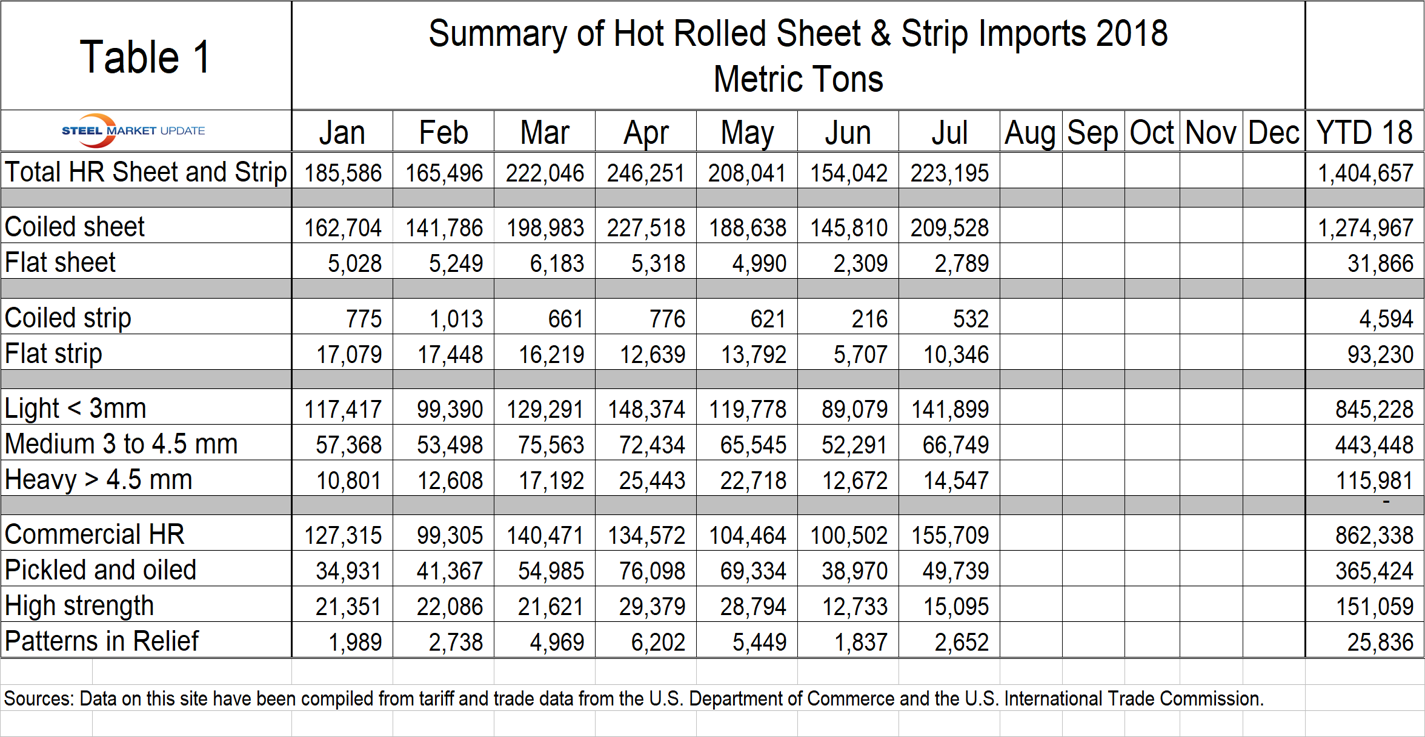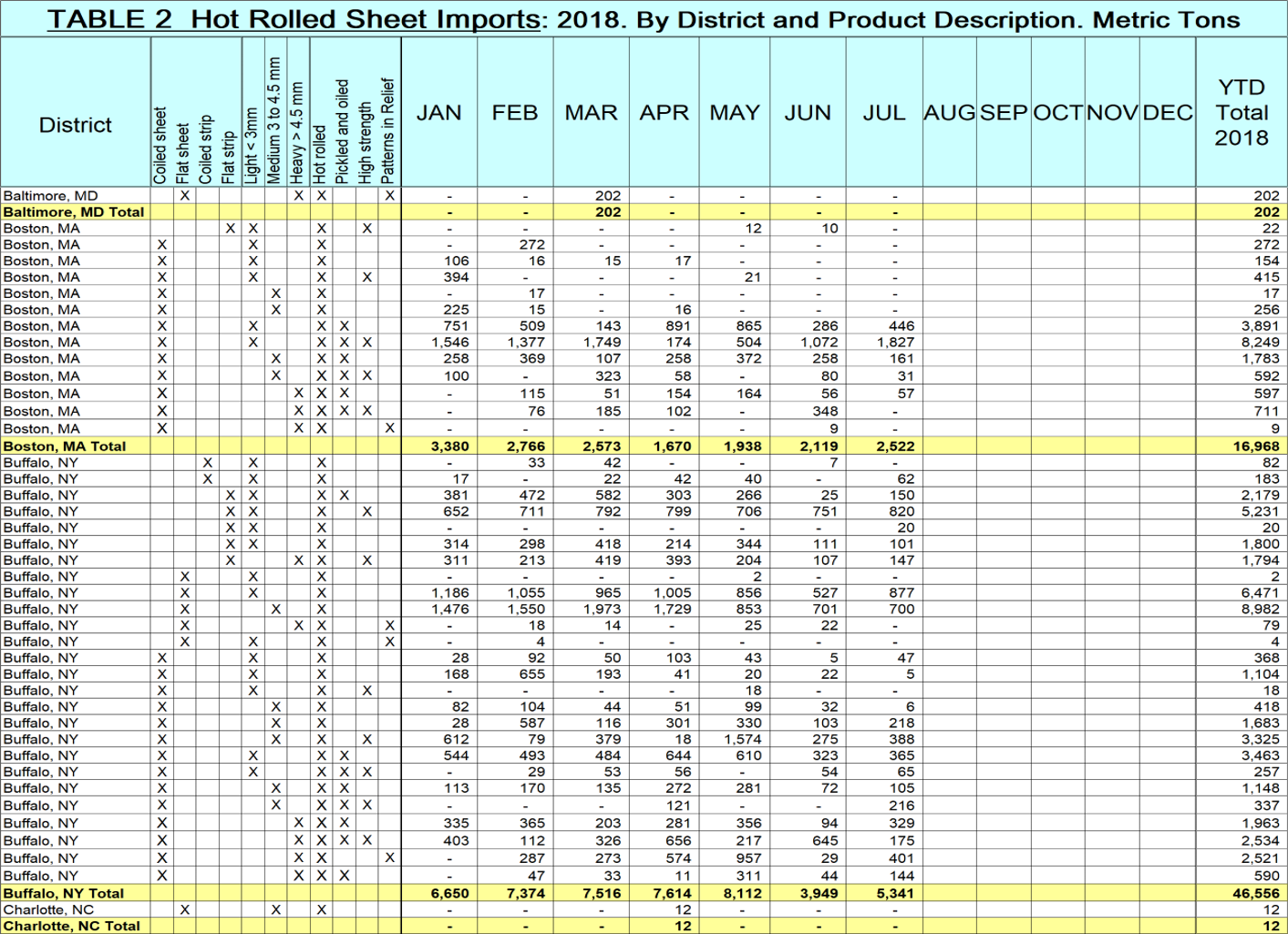Steel Products Prices North America
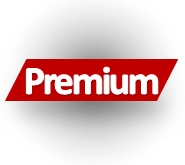
SMU Analysis: HR Imports by Product Detail
Written by Peter Wright
September 13, 2018
Premium subscribers to Steel Market Update have access to reports on our website that break out the import tonnage into district of entry and source nation for six sheet and plate categories. SMU has now developed reports that drill down the HRC and CRC into product detail both nationally and for each district. We report these in alternate months. Our report for August imports will cover hot rolled sheet.
Using U.S. International Trade Commission (USITC) data, SMU has taken the import tonnage of HRC and broken it down into sheet and strip, and whether it was in coil or leveled. Then it separates three gauge ranges, it identifies how much was P&O, how much was high strength and how much had patterns in relief.
Table 1 is a monthly summary and year-to-date 2018 for each of the above conditions.
Figure 1 breaks the year-to-date tonnage down into commercial HR sheet, pickled and oiled, high strength and sheet with embossed patterns.
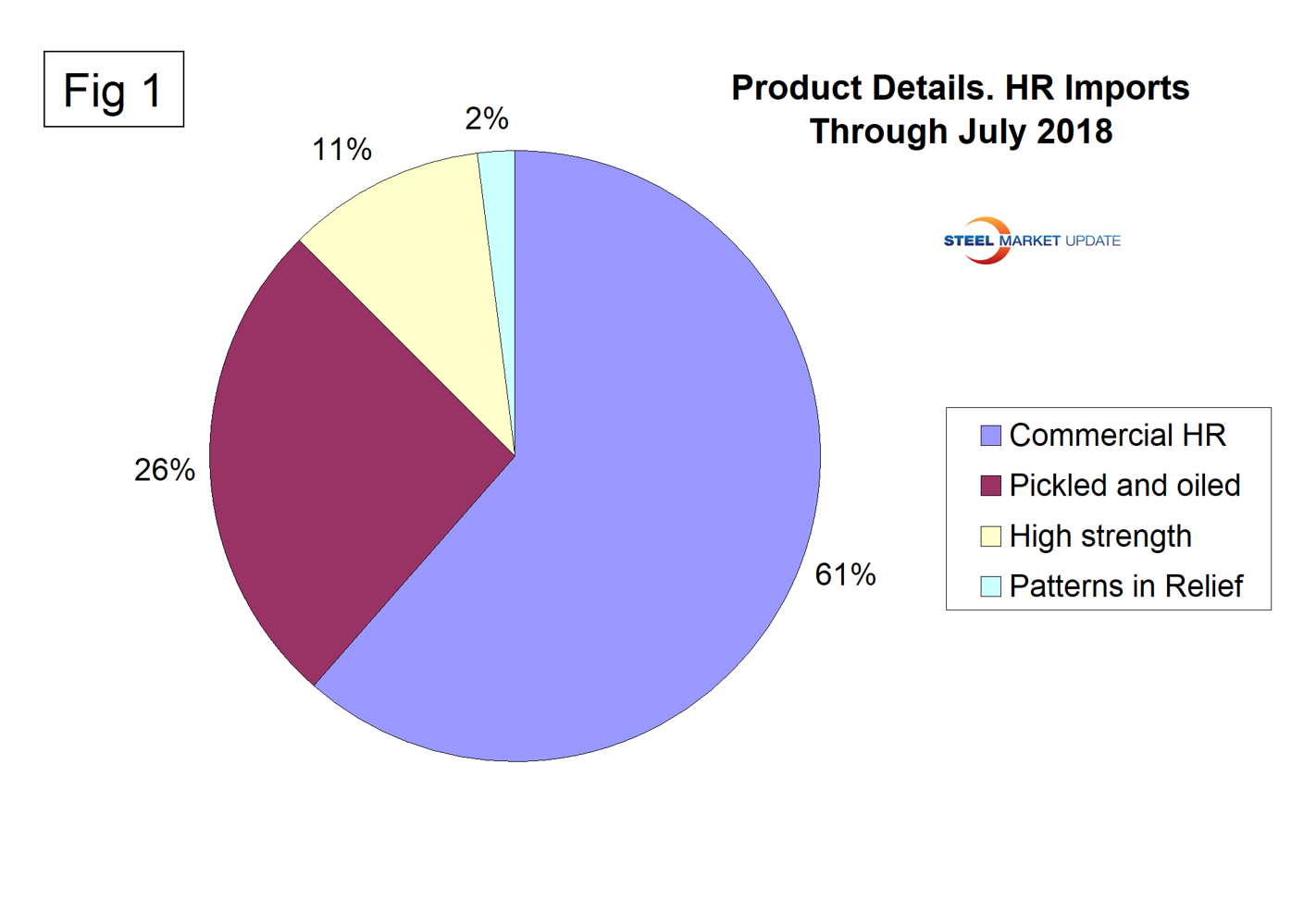 Figure 2 breaks the year-to-date tonnage down into three gauge ranges—light, medium and heavy.
Figure 2 breaks the year-to-date tonnage down into three gauge ranges—light, medium and heavy.
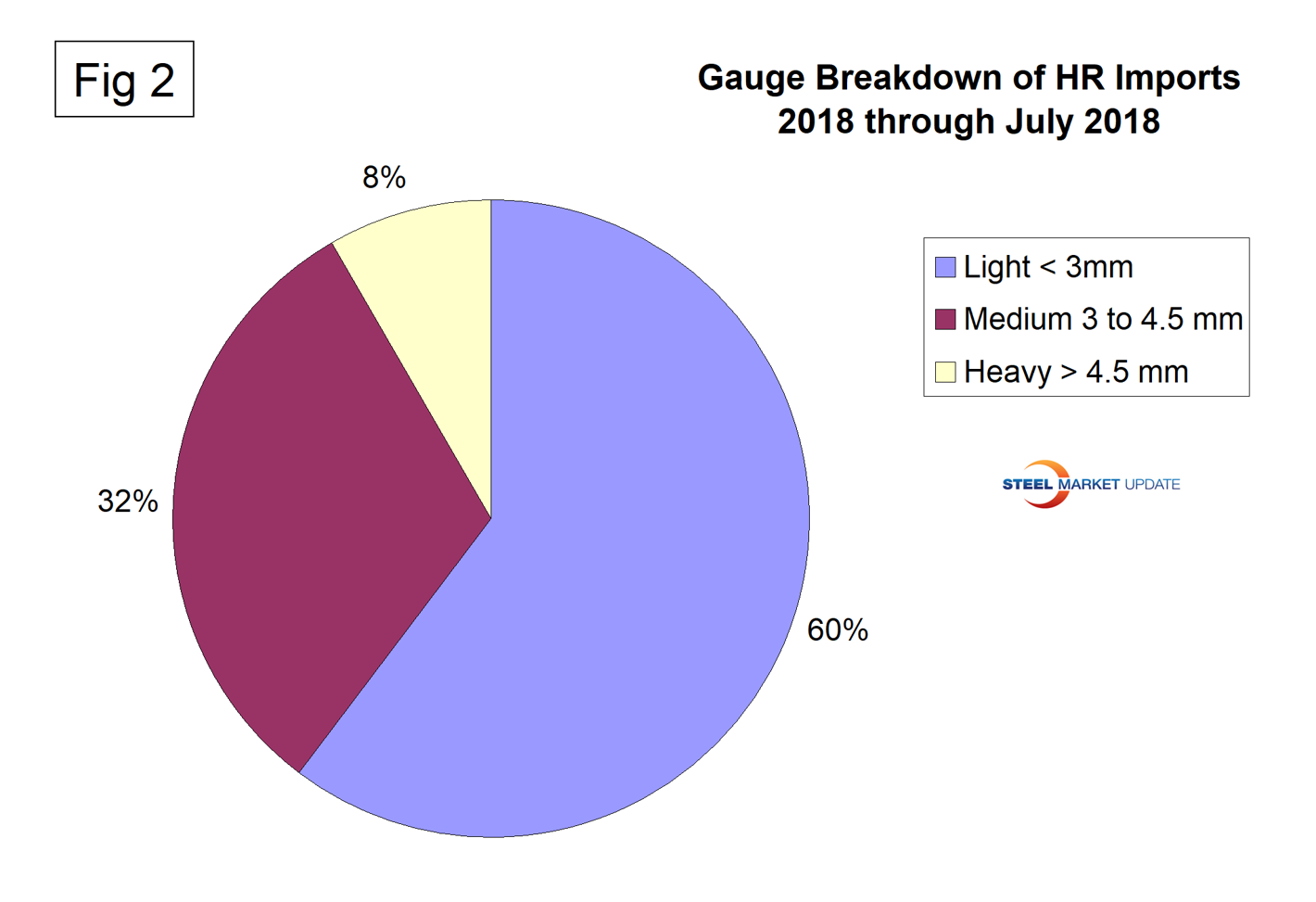
Figure 3 breaks hot rolled sheet imports into coiled and leveled tonnage.
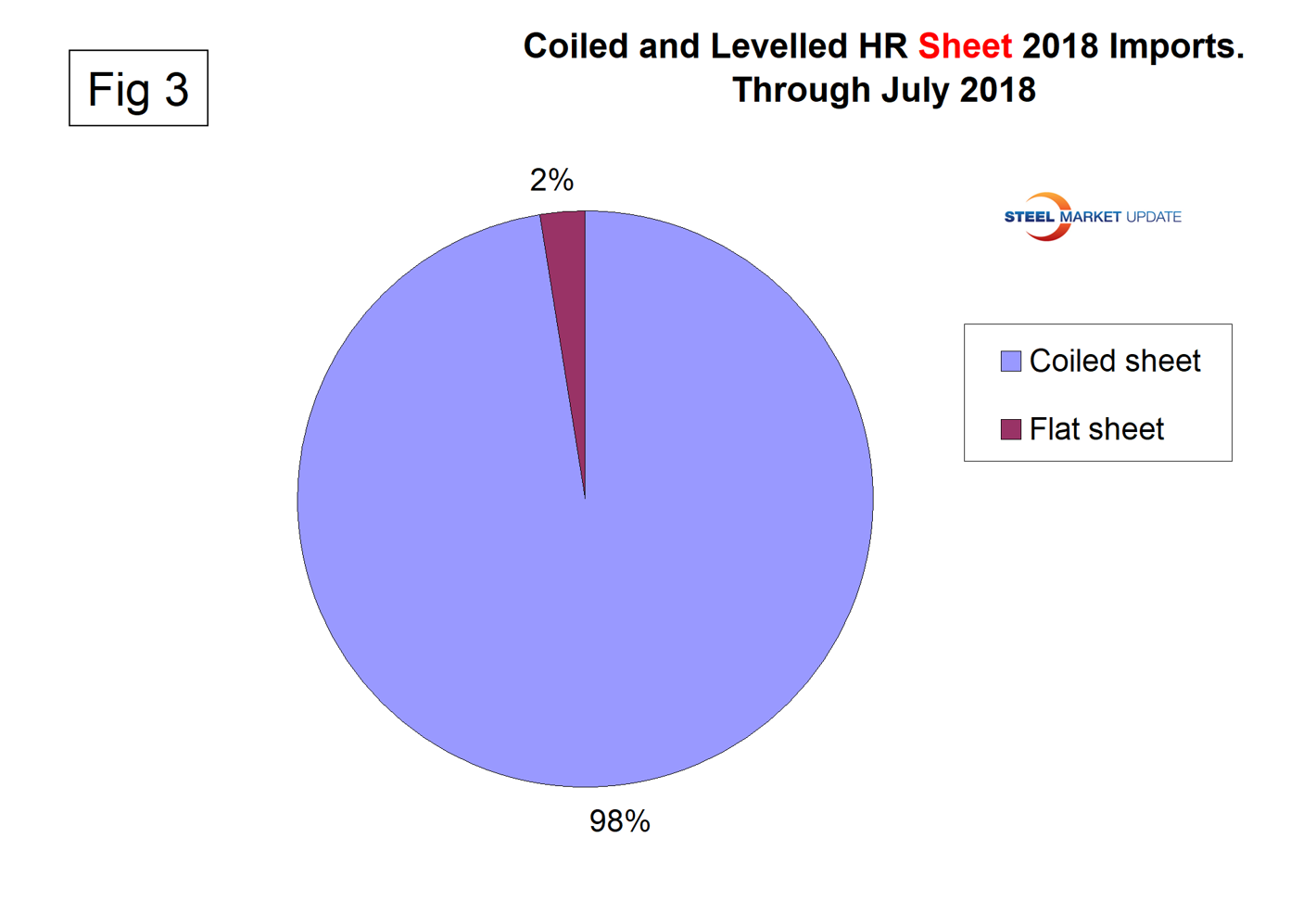
Figure 4 breaks hot rolled strip imports into coiled and leveled tonnage.
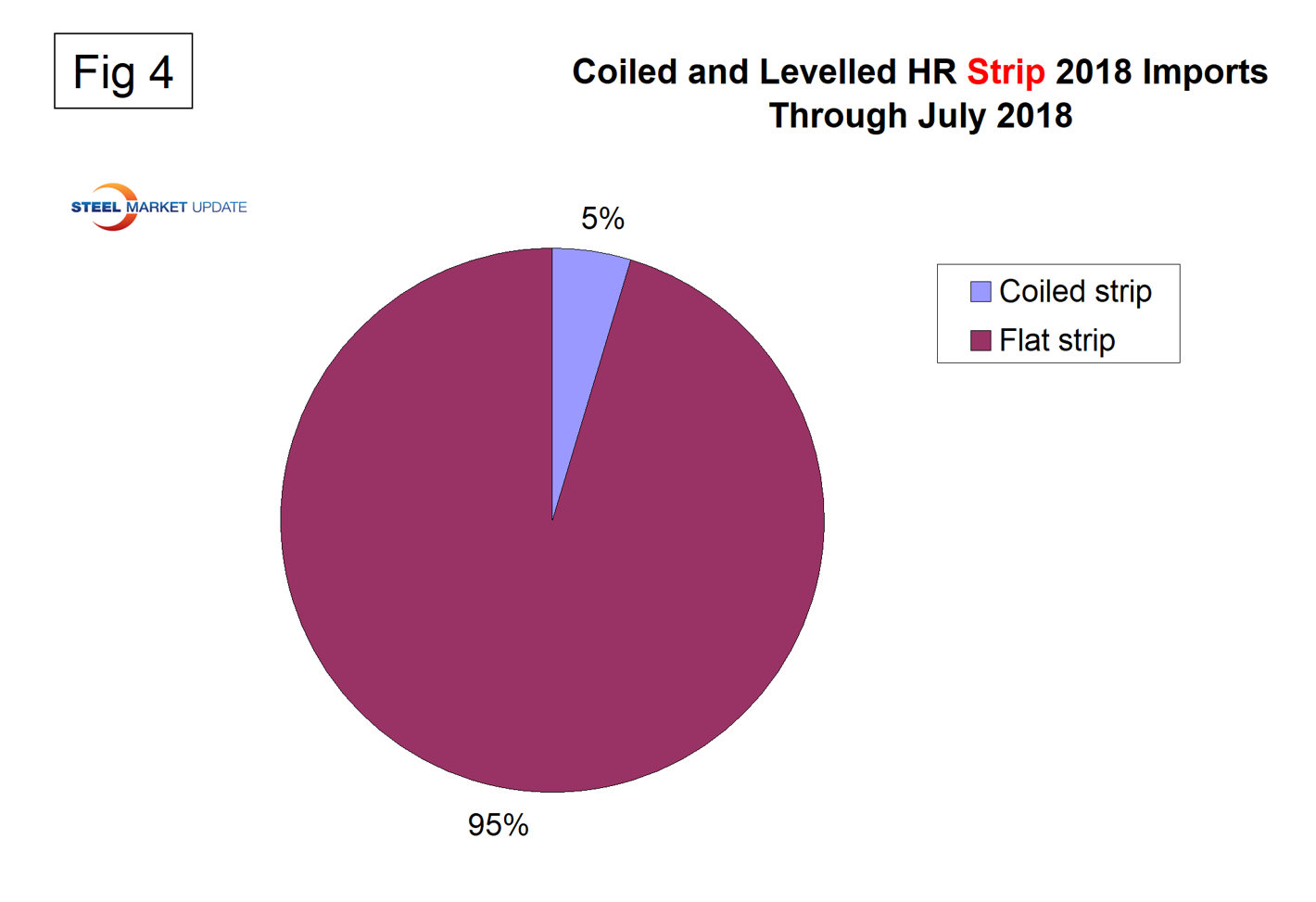
Table 2 is a small part of this sheet that shows detail for every region in the U.S. and is available in the premium section of our website. It shows the product detail of hot rolled sheet and strip imports by district of entry. For example, the largest tonnage item entering Chicago in the first seven months of 2018 was light gauge, pickled and oiled, coiled sheet. Another example is if a steel buyer wanted to know how much light gauge, pickled and oiled sheet had come into Cleveland year to date, the answer is 5.643 metric tons.
Using the combination of SMU import reports, steel buyers know exactly how much hot rolled came into their region, where it came from, what the tonnage by gauge was, how much was pickled and oiled, how much was high strength and how much had patterns in relief.
Note: This data was accessed through the USITC database. All steel traded globally is classified by the Harmonized Tariff System (HTS). The HTS code has 10 digits. The first six are globally universal. The last four are used at the discretion of the nations involved in a particular transaction and are the basis of this report. The way the U.S. uses the last four digits to define products may be different from other nations’ product classification.

Peter Wright
Read more from Peter WrightLatest in Steel Products Prices North America

SMU Price Ranges: Sheet and plate steady ahead of Independence Day
Sheet and plate prices were little changed in the shortened week ahead of Independence Day, according to SMU’s latest check of the market.

Nucor maintains plate prices, opens August order book
Nucor aims to keep plate prices flat again with the opening of its August order book.

Nucor CSP remains level at $900/ton
Nucor maintained its weekly list price for hot-rolled (HR) coil this week, following two consecutive increases.
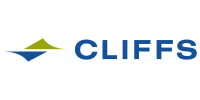
Cliffs raises prices, seeks $950/ton for July spot HR
Cleveland-Cliffs plans to increase prices for hot-rolled (HR) coil to $950 per short ton (st) with the opening of its July spot order book. The Cleveland-based steelmaker said the price hike was effective immediately in a letter to customers dated Monday.

HRC vs. prime scrap spread widens in June
The price spread between HRC and prime scrap widened in June.

